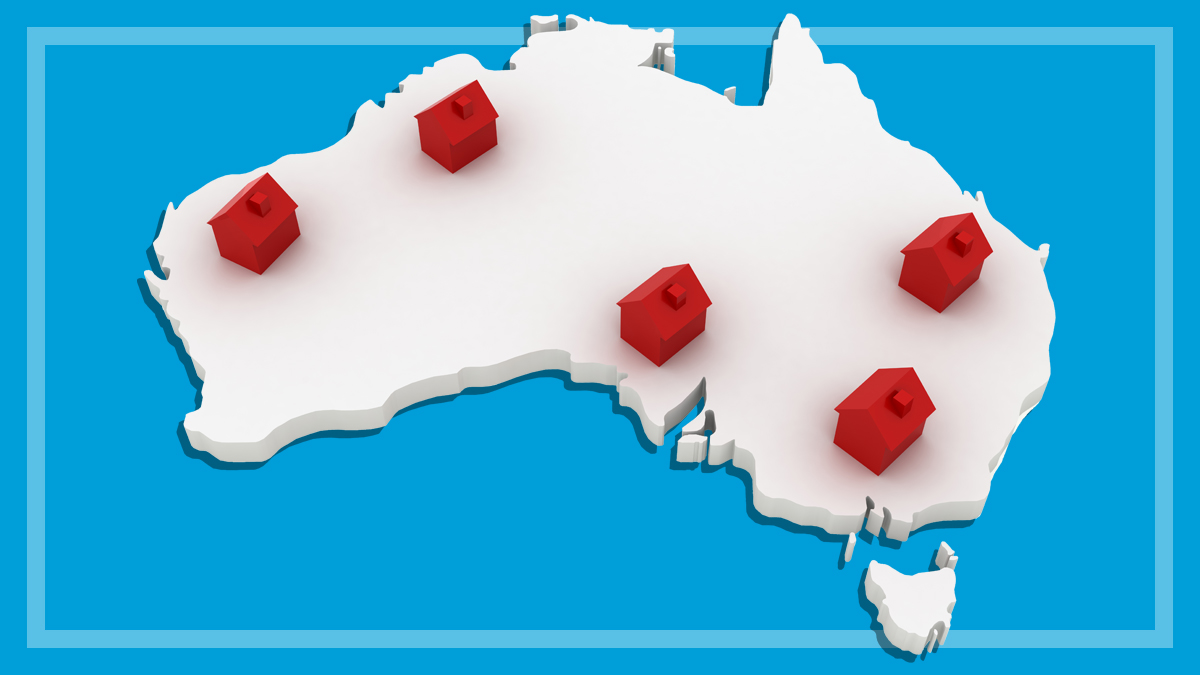Get our independent lab tests, expert reviews and honest advice.
How we compare home and contents insurance

Home insurance is a complicated product. It can be difficult enough trying to understand what your own policy covers you for, let alone trying to compare one with another. CHOICE has been comparing home insurance policies since the 1970s, and in that time we’ve learned a few things about what sets a policy apart from the rest.
On this page:
- How often we review home insurance
- How we choose which insurers to compare
- How we calculate the CHOICE Expert Rating
- How we determine recommended products
- How we obtain pricing data
- How we collect product cover data
- How we calculate the Price score
- How we calculate the Cover score
- Summary of features assessed
- Why we don't include the claims experience or customer satisfaction in our scoring
CHOICE home and contents insurance comparison at a glance
- 12 insurers
- 64 brands
- 99 products
- Up to 5330 quotes per product
- 517 product feature dimensions measured
About CHOICE home insurance reviews
CHOICE compares three types of home insurance:
- combined home and contents insurance, for owner-occupiers of freestanding homes and other types of non-strata property
- contents insurance, for owner-occupiers of strata-titled properties (such as townhouses and apartments) and renters (of any property)
We review home insurance on a regular basis to make sure you get up-to-date information about cover and pricing. We assign scores for competitive pricing (based on thousands of online quotes) and policy coverage (looking at dozens of different product features). These scores are combined to calculate the CHOICE Expert Rating, a score out of 100 that reflects a policy’s level of cover and value for money.
How often we review home insurance
CHOICE reviews home insurance four times a year, when we receive a new batch of pricing data from our provider.
How we choose which insurers to compare
The insurers we choose cover the majority of the home insurance market in Australia and range from brands written by the Big Four insurance agencies to smaller local insurers and newer entrants to the market.
To be included in a CHOICE home insurance review, an insurance product must be available directly to the public. Sometimes an insurer will stop taking new customers, while continuing to allow renewals for existing policies. We’ll decide on a case-by-case basis whether to continue including that policy for review, as the comparison information may be useful for renewing customers.
Big Four
- Suncorp (AAMI, Apia, GIO, Suncorp)
- Allianz (Allianz, Bank of Melbourne, BankSA, COTA, Great Southern Bank, HCF, Hume Bank, Kogan, NAB, National Seniors, Over Fifty, RAA, St.George, TIO, Westpac)
- IAG (AANT, ANZ, Australian Military Bank, Bank First, Bank of us, BCU Bank, Bendigo Bank, Coastline Bank, Defence Bank, Horizon Bank, MOVE Bank, MyState Bank, NRMA, P&N Bank, People First Bank, QBANK, Queensland Country Bank, RACV, Summerland Bank, The Capricornian, The Mutual Bank)
- QBE
Newer entrants and smaller insurers
- Auto&General (Budget Direct, Coles, ING, Ozicare, Qantas, Virgin Money)
- Guild
- Hollard (AHM, Australian Seniors, Bupa, CBA, Everyday Insurance, Huddle, Real Insurance)
- Sure
- Youi
State motoring groups
- RAC
- RACQ (Aldi, Bank Australia, BOQ, Honey, RACQ)
- RACT
How we calculate the CHOICE Expert Rating
The CHOICE Expert Rating is an overall score out of 100. It is a weighted sum of the Cover score (60%) and a national Price score (40%).
How we determine recommended products
Product recommendations are made on the basis of the CHOICE Expert Rating. To be recommended, a product must have pricing data available and score at or above a threshold score. The threshold score is calculated at one standard deviation above the sample average, rounded to the nearest five.
Recommendations are made on a general basis and do not take into account any individual’s objectives, financial situation or needs. Consider the appropriateness of a recommendation before acting on it.
How we obtain pricing data
We obtain pricing data from Finity Consulting, a firm that collects and sells its data to the insurance industry. If an insurer doesn’t participate in Finity’s quote collection program, we can’t compare them on price. This means we cannot calculate a CHOICE Expert Rating for the product, or recommend it.
Each quarter Finity releases a new batch of pricing data. For home and contents insurance, quotes are collected for 5330 different customer profiles per product. For our strata and renter contents comparisons, we use a subset of a larger collection of contents insurance quotes. For strata contents insurance, we compare quotes from 1257 customer profiles. For renter contents, we use 4211 profiles.
The profiles cover a variety of factors such as customer age, address, sum insured, building size and construction materials. The profiles are “market representative”, derived from online quoting activity on the participating insurers’ websites.
How we collect product cover data
The terms and conditions of a home insurance policy are detailed in one or more disclosure documents available from the insurer. The key sources of information we use to collect product data include:
- Product Disclosure Statements (PDS), as well as any supplementary PDSs issued when the insurer makes product changes
- Additional Information Guides (also called Premium, Excess and Discount guides)
- the insurer’s website (including quote forms, where undisclosed sublimits are often hidden).
To get the data we need, we developed a product feature questionnaire that asks everything from whether the policy includes cover for flood, to how much a barbecue would be covered for if it got stolen from your deck. All up, that’s 501 questions.
Whenever an insurer issues a new PDS, our insurance experts compare it to the old one and update the answers to the questionnaire. Our database churns the answers and produces our comparison table. To make sure we haven’t got anything wrong, our in-house verification team double-checks any big changes or additions. For big updates we’ll also send a draft of the report to insurers for them to correct.
How we calculate the Price score
Our home insurance reviews display the results of our price comparisons in two ways: a Price rating and a Price score.
A Price rating is a score out of 5, indicating how expensive a policy is in a given market, relative to others in our pricing dataset. In our reviews, the Price rating is represented in dollar signs. A rating of “$” indicates a very cheap policy (on average), while “$$$$$” is very expensive.
Price ratings are calculated at the state and territory level. In Queensland, we go even further and treat the cyclone-prone parts in the north of the state as their own market. This reflects how the industry treats the state: many insurers who sell policies in the south-east don’t operate north of the Tropic of Capricorn.
The Price score is a score out of 100, indicating how expensive a policy is across all markets it’s available in. It contributes to the CHOICE Expert Rating, but should be used with caution when finding a policy to buy. The reason for this is that home insurance is not always consistently priced across the country.
Home insurance is not always consistently priced across the country – an insurer that’s cheap in one area might be very expensive in another
An insurer that’s cheap in one area might be very expensive in another, and a national Price score doesn’t capture those variations as well as the Price ratings.
Before we compare quotes we apply an “excess standardisation” method. This adjusts the quotes to account for differences in default excess between insurers. This means policies with a lower default excess aren’t penalised (lower excess usually means higher premium).
The price comparison begins by comparing individual quotes against others in the same customer profile sample. Quotes are assigned a score of 0 (most expensive) to 100 (least expensive). We repeat this process, adjusting premiums to account for pay-by-the-month fees charged by some insurers. In this way, half the Price score is based on annual premiums, half on monthly premiums.
We then calculate the policy’s average Quote score per market. The Price rating is this average divided by 20 (rounded up). We also calculate the national Price score, which is the average Quote score across all markets.
Quote scores do not account for the range in premiums quoted. The most expensive quote for one profile might be thousands of dollars greater than the cheapest, while in another the dearest quote may only be a couple hundred dollars more than the winner. In both cases the most expensive quote will be scored 0.
How we calculate the Cover score
To calculate the Cover score we first calculate a range of sub-scores, called Feature Component scores. Component scores are where we really get into the detail about what the product actually covers. Every data point that contributes to a Component score is included in the comparison table.
For combined home and contents, we calculate 192 Component scores. In our renter contents comparison there are 144, while there are 149 in strata contents. Most of these components are common to all types of home insurance (for example, scoring for things like bushfire cover) while a few are specific to their particular insurance type (such as fixtures cover for strata contents).
Although an insurance policy can be very complicated, we assess each feature on similar criteria, if they’re relevant to the feature. Each Component score is one of the following types.
Feature cover: Does the policy cover this feature? If a feature is part of the default cover, the policy scores 100. If it’s an optional extra, then the score is 50.
Insured event cover: Does this feature have any restrictions on certain insured events? For example, under the feature “contents in the open air” you might be covered for storm but not theft. If there are common event exclusions for a particular feature, we’ll score them. Default cover scores 100, while optional cover scores 50 (including where you’d have cover for this feature only under a policy-wide “accidental damage” add-on).
Excess: Sometimes a feature comes with its own excess, such as portable contents cover. Full points are awarded to the policy with the lowest feature-specific excess. The highest excess in the sample scores 0. If a policy doesn’t have a feature-specific excess (in which case the standard building or contents excess for your policy is payable), we assume a $600 excess and score accordingly.
Category limits: What is the overall benefit limit for this feature? Full points are awarded for cover that is “up to the sum insured”. The lowest benefit in the sample scores 0, while the highest scores 100. Penalties are then applied, as described below. For some features a bonus is applied if the benefit is paid out separately to the sum insured (as happens sometimes with debris removal, for example).
Time limits: Some features have a time limit, rather than a benefit limit. Examples include temporary accommodation and portable contents when travelling overseas. Full points are awarded for policies with no time limit, while the shortest limit in the sample scores 0.
Item limits: What is the per-item limit for this feature? Features that have item limits include jewellery and portable contents cover. The lowest benefit in the sample scores 0, while the highest scores 100. Penalties are then applied, as described below.
Item cover: What things are included or excluded under this feature? For example, some policies’ “new for old” cover excludes a range of items like old computers, carpet, and clothes stored away. We score policies on whether these commonly excluded items are covered.
Generally speaking, benefits in home insurance are offered as a flat dollar amount, or as a percentage of the sum insured. In order to compare policies with dollar benefits to those with percentage benefits, we convert percentage benefits to a dollar amount, using an indicative sum insured figure.
This amount is the average sum insured of the 5330 market-representative quote profiles used to collect combined home insurance quotes. These values are updated annually, and for 2024 they are:
- Building: $745,000
- Contents: $130,000.
For example, if a policy offers up to 20% of the contents sum insured for a particular feature, we score it as if it had a $26,000 limit. These conversions happen when scoring category limits and item limits. Benefits described as “reasonable cost” or “up to the sum insured” are not converted, as this skews the sample and is not usually representative of the benefit claimable. These policies are differentiated in scoring by the application of sublimit penalties.
In some circumstances a penalty is applied to a Component score. Each penalty reduces the Component score by 5%.
Sublimits versus no sublimits: If the sample contains a benefit with no sublimit (i.e. cover is up to the sum insured, “replacement cost” or “reasonable cost”), all policies with a sublimit will have a penalty applied. The intention of this penalty is to assess product complexity: a product with many sublimits, which the insured is required to keep abreast of, will have its score penalised across many features. This penalty is used in scores for category limits, time limits and item limits.
Dollar versus percentage limits: If the sample contains a policy with no sublimit or a percentage benefit, all policies with a dollar limit have a penalty applied. This penalty is intended to address the fact that dollar benefits increase only when the insurer wants them to, not annually with inflation. Over time the real value of the benefit will decrease, unlike a percentage benefit, which will increase as you or your insurer increases your sum insured. This penalty is used in scores for category limits and item limits.
Summary of features assessed
Each Component score applies to an individual feature, and each feature is grouped into one of six sections. Each section has its own weighting relative to the total Cover score:
| Section | Home and contents | Strata contents | Renter contents |
|---|---|---|---|
| Valuation | 15% | 15% | 15% |
| Insured event cover | 30% | 25% | 25% |
| Legal liability | 5% | 5% | 10% |
| Claiming | 10% | 10% | 10% |
| Portable contents | 10% | 10% | 10% |
| Additional features | 30% | 35% | 30% |
| Section | Feature | Home and contents | Strata contents | Renter contents |
|---|---|---|---|---|
| Property valuation | Building cover type (sum insured versus total replacement) and underinsurance safety net | 10% | N/A | N/A |
| Property valuation | Contents underinsurance safety net | 5% | 15% | 15% |
| Insured event cover | Damage caused by animals | 3% | 2% | 2% |
| Insured event cover | Fire | 3% | 3% | 3% |
| Insured event cover | Theft and burglary | 4% | 3% | 3% |
| Insured event cover | Accidental breakage of glass | 2% | 2% | 2% |
| Insured event cover | Accidental damage to the building and contents at home | 4% | 3% | 3% |
| Insured event cover | Action of the sea | 1% | 1% | 1% |
| Insured event cover | Earthquake | 1% | 1% | 1% |
| Insured event cover | Escape of water/liquid | 1% | 1% | 1% |
| Insured event cover | Explosion | 1% | 1% | 1% |
| Insured event cover | Flood | 3% | 2% | 2% |
| Insured event cover | Impact damage | 1% | 1% | 1% |
| Insured event cover | Storm | 3% | 2% | 2% |
| Insured event cover | Storm surge | 1% | 1% | 1% |
| Insured event cover | Tsunami | 1% | 1% | 1% |
| Insured event cover | Vandalism and malicious damage | 1% | 1% | 1% |
| Legal liability | Legal liability | 5% | 5% | 10% |
| Claiming | 24/7 claims phone line | 2.5% | 2.5% | 2.5% |
| Claiming | Cash settlement rules for building claims | 2.5% | N/A | N/A |
| Claiming | Cash settlement rules for contents claims | 2.5% | 5% | 5% |
| Claiming | New for old replacement | 2.5% | 2.5% | 2.5% |
| Portable contents | Unlisted/unspecified portable contents | 7.5% | 7.5% | 7.5% |
| Portable contents | Specified/listed portable contents | 2.5% | 2.5% | 2.5% |
| Additional features | Contents in the open air | 3% | 2% | 2% |
| Additional features | Motor burnout | 3% | 5% | 5% |
| Additional features | Temporary accommodation | 3% | 2% | 2% |
| Additional features | Debris removal and demolition | 3% | 3% | 3% |
| Additional features | Gardens and landscaping | 3% | N/A | N/A |
| Additional features | Contents in transit when moving to a new home | 2% | 2% | 2% |
| Additional features | Unlisted jewellery at home | 2% | 2% | 2% |
| Additional features | Contents at the new address when moving house | 1% | 2% | 2% |
| Additional features | Costs to comply with building regulations | 1% | N/A | N/A |
| Additional features | Digital contents (software, etc.) | 1% | 2% | 2% |
| Additional features | Emergency storage costs | 1% | 2% | 2% |
| Additional features | Mortgage discharge fees | 1% | N/A | N/A |
| Additional features | Professional fees (architects, etc.) | 1% | N/A | N/A |
| Additional features | Spoilage of refrigerated/frozen food | 1% | 2% | 2% |
| Additional features | Unlisted collections (stamps, coins, etc.) | 1% | 2% | 2% |
| Additional features | Unlisted works of art | 1% | 2% | 2% |
| Additional features | Vet bills | 1% | 1% | 1% |
| Additional features | Visitors’ contents | 1% | 1% | 1% |
| Additional features | Fixtures/fittings not covered by body corporate building insurance | N/A | 5% | N/A |
Why we don’t include the claims experience or customer satisfaction in our scoring
In short, it’s because reliable data doesn’t exist to look at either metric. Financial regulators are in the process of developing a data collection process for claims handling. When this data begins to be published, we’ll know things like what percentage of claims are accepted, and how long on average an insurer takes to settle a claim.
The Australian Financial Complaints Authority (AFCA) publishes a dashboard summarising the complaints they receive. However, the data is not easily extracted, and we have concerns that the tool doesn’t give enough information about an insurer’s market share for us to compare them on a like-for-like basis.
In 2025 we conducted a nationally representative satisfaction survey for home insurance customers, looking at things like the claiming experience and what makes people loyal to their insurer. In our comparison we list the percentage of respondents who rated their experience with their home insurer as “above average” or “excellent” as the Satisfaction score.
Not every insurer has this score, because it’s difficult to get a large enough sample size for small insurers. As a result, we can’t include this score in the CHOICE Expert Rating, but it’s still worth looking at if you’re in the market for a new policy.






